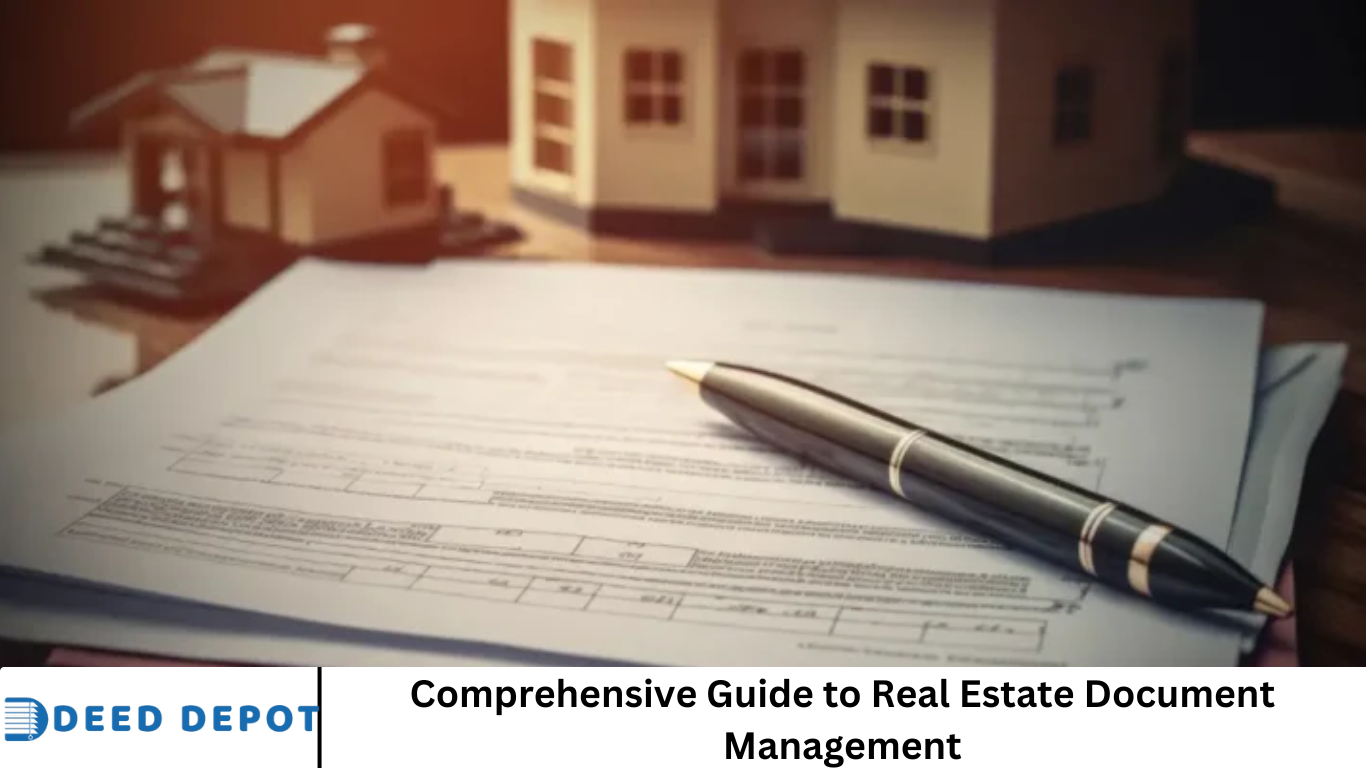In real estate, managing paperwork is more than just filing binding contracts and disclosures—it’s about securing, organizing, and quickly retrieving critical documents. Whether you’re a commercial firm handling hundreds of leases or a residential agent juggling multiple closings, a robust real estate document management system transforms how you operate—saving time, reducing risks, and boosting client trust.
More Read: Securing Your Digital Assets: The Role of Online Vaults in Data Protection
Core Challenges in Real Estate Document Handling
Information Overload
Stacks upon stacks of legal forms, property brochures, permits, and more pile up fast. Searching manually through folders wastes valuable hours.
Version Control Chaos
Multiple drafts of contracts and disclosures can leave agents unsure which file is final—risking legal errors.
Compliance & Security
Real estate firms must comply with regulations (e.g. GDPR, state‑specific data laws) and protect sensitive client data from breaches.
Limited Access & Coordination
Fragmented storage across personal drives, email attachments, and office cabinets hinders teamwork and delays decision‑making.
These challenges make digital, AI‑powered document management solutions not just convenient—but essential.
Benefits of Intelligent Document Management
Centralized Storage & Indexing
Organize contracts, property files, and disclosures in a unified repository. Tags and metadata let you search instantly by date, address, or client name.
Quick Retrieval
Find contracts or brochures in seconds with optical character recognition (OCR) and smart search filters—no more scrolling through endless folders.
Enhanced Security
Granular access controls empower admins to restrict document access based on roles. Audit trails log who opened, edited, or downloaded each file.
Automatic Version Control
Track changes across document iterations—view revision history and restore previous versions to prevent accidental legal slip‑ups.
Faster Collaboration
Share paperwork with colleagues or external partners via secure links. Built‑in annotation tools simplify feedback and final review.
Regulatory Compliance
Stay compliant with digital signatures, encryption, retention policies, and secure backup—reducing risk and liability.
Connect to Broader Real Estate Workflow
Integrate document management with CRM systems, broker/MLS portals, accounting software, and even AI‑powered flyer generators for a cohesive workflow.
Key Features to Look For 🛠️
| Feature | Why It Matters |
|---|---|
| OCR & Full‑Text Search | Locate documents via keyword, even within PDF text |
| Automated Tagging & Metadata | Tag by property, date, client—improves findability |
| Role‑Based Access Controls | Secure sensitive files, meet compliance standards |
| Version History Tracking | Avoid draft confusion and maintain legal accuracy |
| e‑Signature Integration | Speed up approvals and closings without printouts |
| Audit Logs | Track who accessed or edited documents for accountability |
| Easy Integrations (APIs) | Sync with CRM, MLS, accounting, marketing tools |
| Mobile & Remote Access | Review contracts from the field or while traveling |
| Scalable Cloud Storage | Handle growing volumes without upgrading office servers |
| Built‑in Collaboration Tools | Real‑time co‑editing, comment threads, team notifications |
Step‑by‑Step Implementation Guide
Step 1: Audit & Map Your Current Process
List every document type (leases, try‑before‑you‑buy forms, inspection reports, permits, etc.). Map how they’re created, stored, edited, signed, and archived.
Step 2: Choose the Right Platform
Weigh factors like OCR accuracy, security compliance, integrations, user experience (desktop vs. mobile), pricing tiers, and vendor reputation.
Step 3: Migrate & Organize
Set up folder structures (e.g. by property → transaction date → document type). Use automated tools or data‑entry teams to apply metadata for easy retrieval.
Step 4: Train & Onboard
Provide in‑person demos or short video tutorials. Walk agents through uploading, tagging, searching, and sharing docs. Equip admins to manage user access and backup routines.
Step 5: Enable Automation
Set up document templates (e.g. lease agreements, inspection forms). Trigger automatic reminders to clients for e‑signatures or renewal notifications.
Step 6: Secure & Monitor
Configure encryption in transit and at rest. Define user roles and data retention policies. Monitor access logs to spot anomalies or unauthorized downloads.
Step 7: Iterate & Optimize
Collect user feedback regularly—look for pain points like slow performance or missing integrations. Train users on advanced features to boost adoption.
Best Practices and Tips
- Define Filing Standards Early – Uniform naming (e.g., “YYYY‑MM‑DD_PropertyAddress_DocumentType_AgentName”) avoids chaos.
- Use Metadata for Smart Search – Fields like property size, client name, purchase price, and region improve filtering.
- Review Retention Policies Regularly – Some documents have to be kept 6–10 years depending on state and purpose.
- Back Up & Test Disaster Recovery – Ensure documents are backed up offsite or in geographically separated data centers.
- Stay Up to Date with Regulations – Keep abreast of privacy laws such as Pakistan’s Personal Data Protection Bill (PDPA) or international GDPR if you work with overseas clients.
- Promote User Adoption with Incentives – Offer perks or recognition for agents who fully embrace the system.
- Regular Security Audits – Quarterly reviews of user access, permission sets, and archived documents reduce insider and external threats.
- Adapt to Mobile Workflows – Agents on site need quick mobile access—look for mobile‑first interfaces and offline sync features.
Common Pitfalls & How to Avoid Them
- Half-Implemented Systems – Buying tools without full configuration results in cluttered folders.
Fix: Dedicate a rollout team & timeline; avoid premature onboarding. - Lack of User Training – Agent frustration stalls adoption.
Fix: Create FAQ docs and host regular refresher sessions. - Overlooking Security – Default settings might not meet your compliance needs.
Fix: Consult IT or compliance experts to audit roles and encryption. - No Document Retention Policy – Leads to legal risks or overly complex archives.
Fix: Define and automate retention schedules for each document type. - Underutilizing Integrations – Manual workflows persist ignored if CRM sync is missing.
Fix: Use APIs or Zapier to connect FSM, CRM, accounting, marketing tools.
Case Studies / Real‑World ROI
Case Study: Khan & Sons Properties (Faisalabad)
Challenge: 30 agents, 1,200 annual transactions, messy Excel logs and email‑chain contracts.
Solution: Deployed a cloud DMS with OCR, e‑sign, and CRM linking.
Result:
- 40% drop in document retrieval time
- 60% fewer physical printouts
- 2-hour saving per agent weekly
- Reduced compliance errors by 85%
Case Study: UrbanEdge Commercial Real Estate
Challenge: Complex lease portfolios across 5 cities, multi‑party sign‑offs.
Solution: DMS integrated with DocuSign, regional user roles, and audit tracking.
Result:
- Lease negotiation accelerated by 30%
- Real-time visibility for finance and legal teams
- Higher client satisfaction scores post-transaction
Frequently Asked Question
What is real estate document management?
Real estate document management is the process of digitally storing, organizing, securing, and retrieving documents such as contracts, lease agreements, disclosures, inspection reports, and client records. It often involves using software systems or cloud platforms to streamline workflows and ensure compliance.
Why is document management important in real estate?
The real estate industry handles high volumes of paperwork that are legally and financially significant. Proper document management helps reduce errors, ensures faster transaction processing, protects sensitive data, and improves collaboration between agents, clients, and legal teams.
What types of documents should be included in a real estate document management system?
Key documents include:
- Purchase and sale agreements
- Lease contracts
- Title deeds
- Disclosure statements
- Inspection and appraisal reports
- Marketing materials (e.g., brochures and flyers)
- Legal correspondence and permits
- E-signature records and audit logs
What features should I look for in a real estate document management solution?
Top features include:
- Cloud-based access
- OCR (optical character recognition)
- Advanced search and filtering
- Role-based permissions and encryption
- E-signature integration
- Version control
- Mobile access
- CRM or MLS integration
How does document management software improve compliance and security?
These systems use encryption, secure user authentication, access controls, and audit trails to meet compliance standards (e.g., GDPR, local data laws). They also support document retention policies to help avoid legal issues related to mismanagement or data loss.
Can document management systems integrate with other real estate tools?
Yes, many platforms integrate with CRMs, e-signature apps (like DocuSign), AI flyer generators, accounting tools, and property management software. Integration helps centralize workflows and eliminate redundant data entry.
Is switching to a digital document management system expensive or difficult?
Not necessarily. Many cloud-based solutions offer affordable pricing tiers based on users or storage. With proper onboarding and training, even small real estate agencies can transition quickly and see a return on investment through time savings and improved client service.
Conclusion
Fast-paced and compliance-driven real estate market, efficient document management isn’t optional—it’s essential. From reducing paperwork overload to improving data security and accelerating deal closures, a well-implemented document management solution transforms how your business operates. By embracing digital tools, automating repetitive tasks, and centralizing your document ecosystem, you’ll not only save time and cut costs but also deliver a better experience to clients, partners, and investors. Whether you’re managing a small agency or a multi-city real estate firm, the right system empowers you to stay organized, compliant, and competitive in a rapidly evolving industry.


